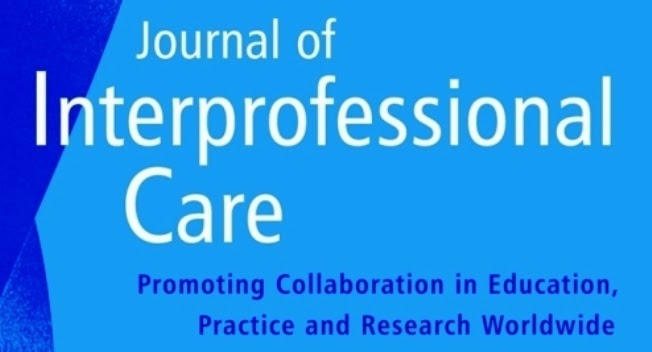Announcement
We are looking for books and reports on all topics related to interprofessional education and collaboration to review on the Blog. If you know of a recently published (hard copy/online) book/report, or have an interest in producing a book/report review please email: jic.editorialoffice@gmail.com
Thursday, June 23, 2016
Blog Article: Ten Tips for Publishing Manuscripts in the Journal of InterprofessionalCare
Sunday, June 5, 2016
Book Review: Interpersonal and Group Dynamics: A Practical Guide to Building an Effective Team
This is a useful foundational textbook geared towards understanding group work and interpersonal skills at the college or university level. The textbook provides a practical, skills based overview of the range of helping skills required within a group context including topicssuch as group member roles, establishing effective rules, goal setting, effective communication, dispute and problem resolution, and the evaluation of group performance. The author, Bruce Bjorkquist, has taught at the college level for over 30 years and while his field of practice was based in nursing, the textbook presents the material within an interdisciplinary context that can be applied not only to human service professionals but other contexts such as business or management as well. The goal of the textbook is to provide an experiential model for teaching and learning group work skills. It is written with this overarching outcome in mind. While the structure and syntax of the book often feel more like a training manual than a conventional textbook, each chapter presents concepts in a clear, concise and developmental fashion. The beginning of each chapter identifies chapter goals, and definitions are highlighted in the columns of every page to assist students in their mastery of the material. The author also provides a summary, list of key terms, activities, list of recommended readings and useful URL weblinks at the end of each chapter that allow students to build on the concepts identified within the chapter.
One unique component of the textbook is the inclusion of a skills acquisition framework. At the end of each chapter are a series of experiential exercises that allow students to practice their group work skills. Should an instructor wish to fully embrace this model, there are clear instructions and a Teacher’s Guide that allow for the development of five student teams (Executive Team, Lesson Review Team, Teaching Team, Energizer Team, Evaluation Team). The model identifies specific roles and responsibilities for each team member as well as specific team assignments for each chapter that could be utilized to allow the students to engage with and present the material themselves each week. While the framework is quite prescriptive, it provides all of the required handouts, materials and instruction for students who might be new to the concepts and skills being covered within the particular chapter.
Overall, the textbook provides a practical and student friendly overview of the foundational skills for group work. Acceptingthat the textbook is more practical than theoretical, it offers students a foundational introduction to the topic and the necessary skills they will need to develop. It also presents an interesting framework for faculty to consider should they want to deliver the material in a more participatory fashion. I would recommend the textbook for anyone who works with groups or teams either within and outside of human service professionals.
Reviewed by
Kevin Hood, Associate Professor
MacEwan University, Canada
Interpersonal and Group Dynamics: A Practical Guide to Building an Effective Team (2nd Edition)
By Bruce Bjorkquist
Toronto, Emond Montgomery Publications Ltd. 2011.
213 pages. $88.00 CDN
ISBN: 978-1-55239-397-0
